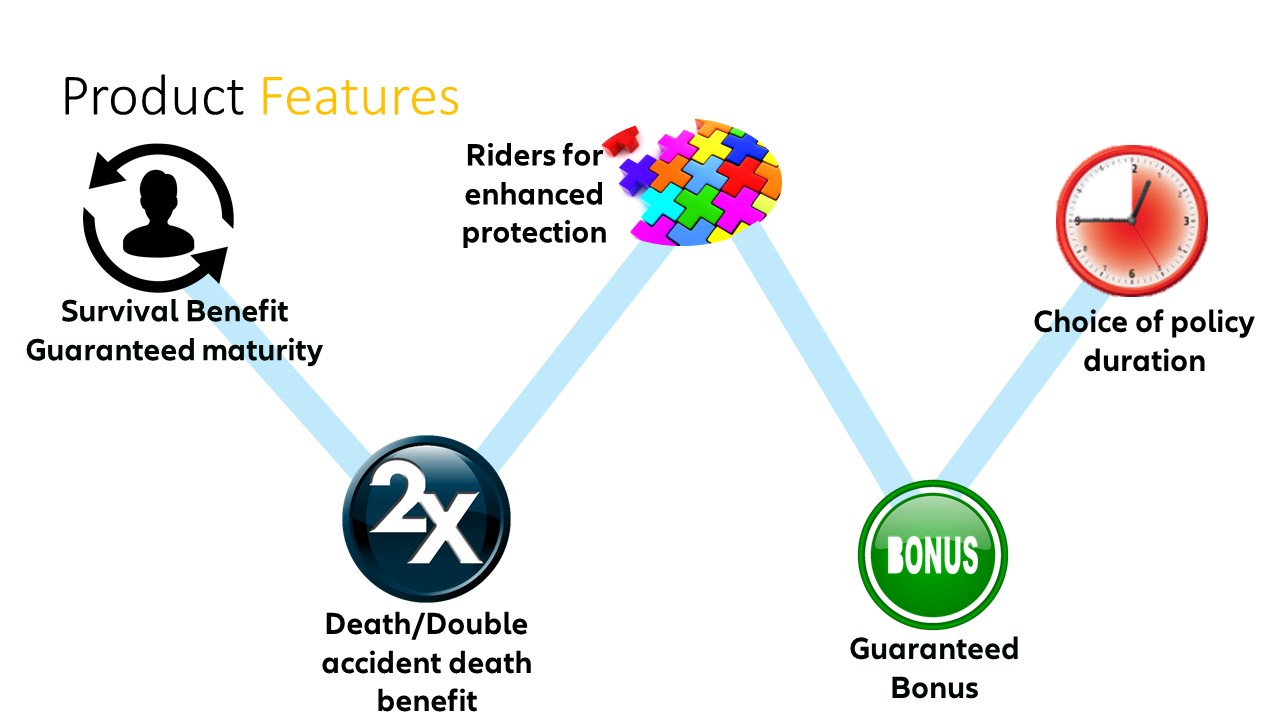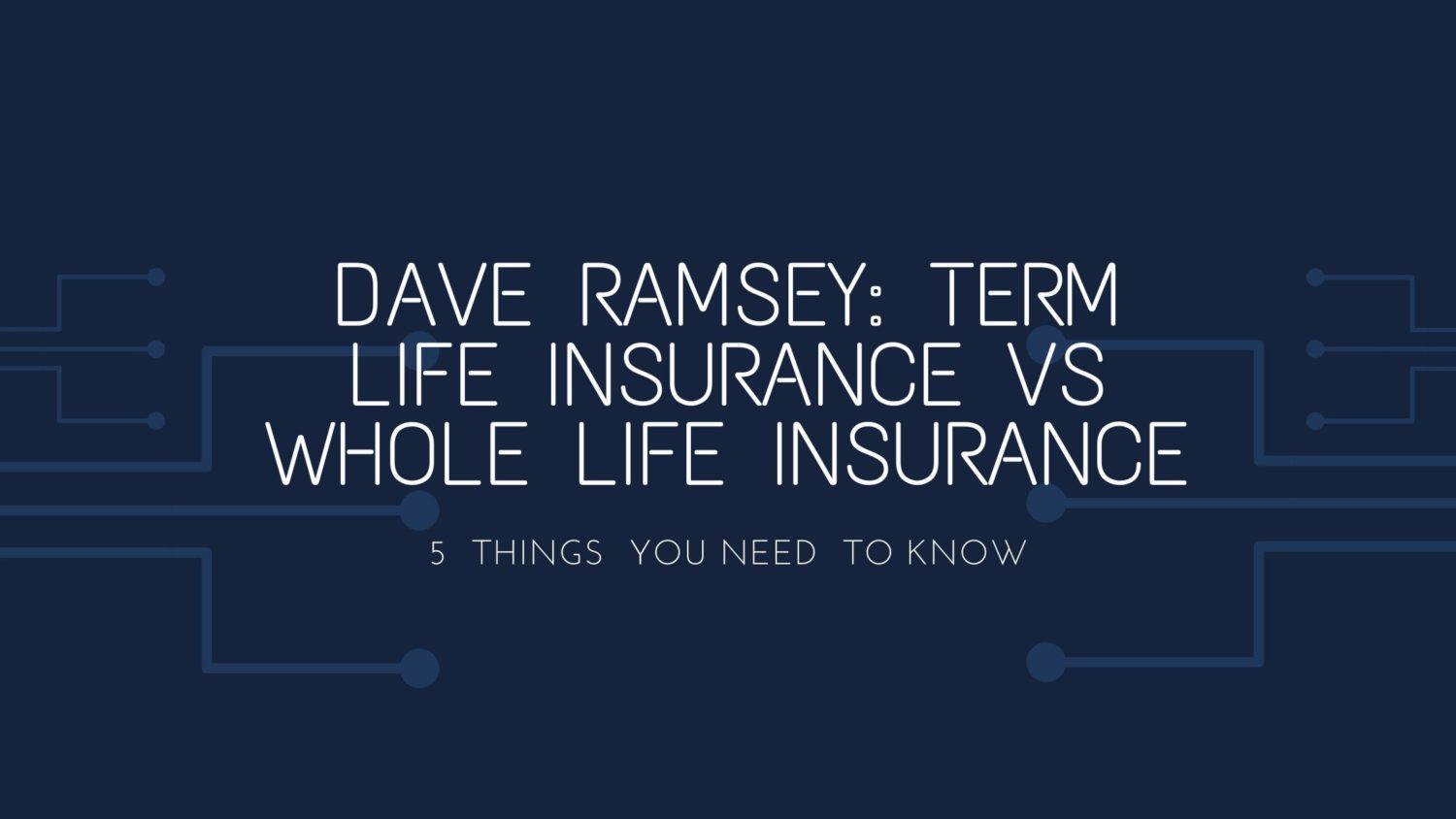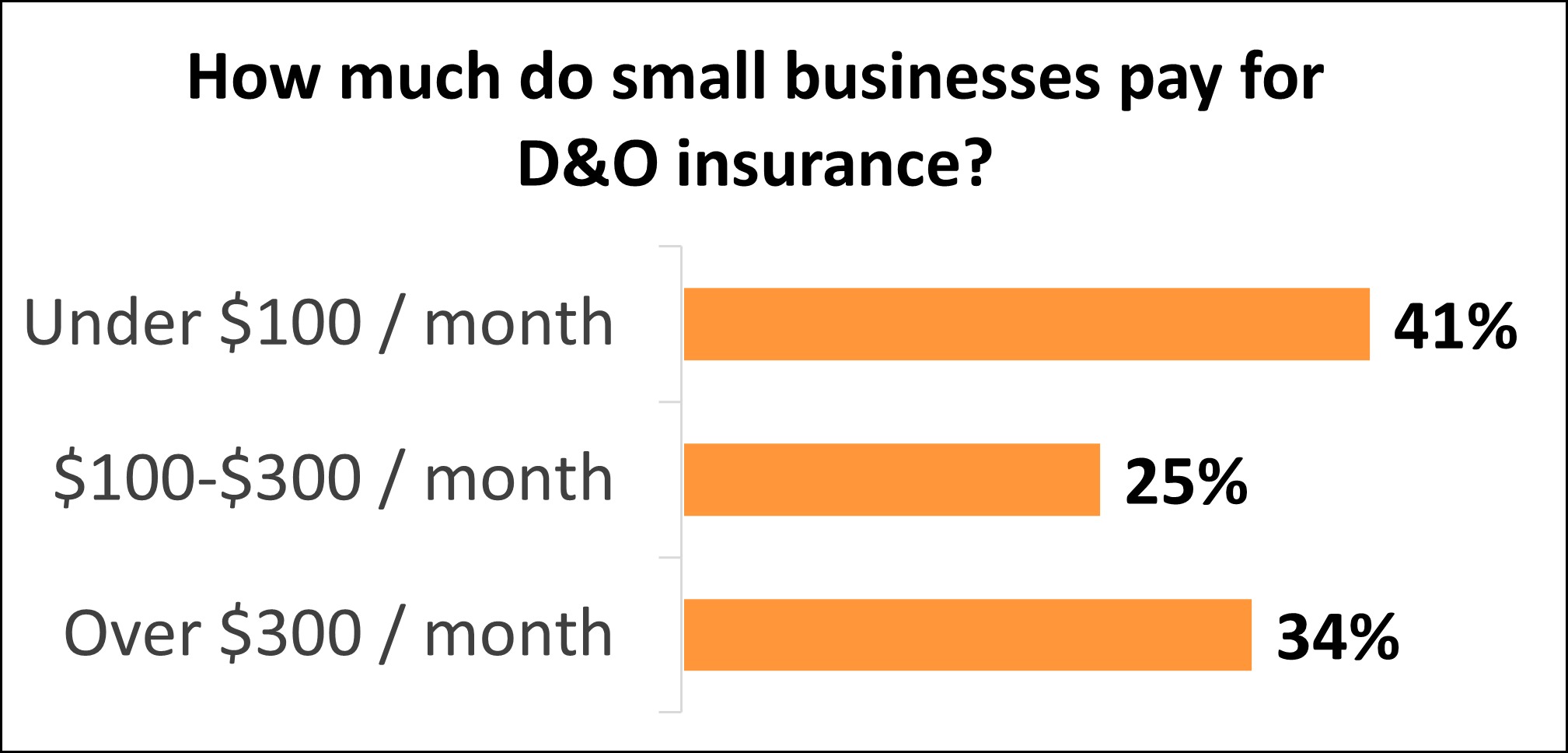

Finance
When Does A Whole Life Insurance Policy Endow
Modified: February 21, 2024
Find out when a whole life insurance policy endows and get the financial security you need. Gain peace of mind with our comprehensive finance solutions.
(Many of the links in this article redirect to a specific reviewed product. Your purchase of these products through affiliate links helps to generate commission for LiveWell, at no extra cost. Learn more)
Table of Contents
- Introduction
- Understanding Whole Life Insurance
- How a Whole Life Insurance Policy Works
- What is an Endowment?
- Factors that Determine when a Whole Life Insurance Policy Endows
- Common Endowment Options for Whole Life Insurance Policies
- Advantages and Disadvantages of Endowment in Whole Life Insurance
- Conclusion
Introduction
Whole life insurance is a type of permanent life insurance that offers both a death benefit and a cash value component. Unlike term life insurance, which provides coverage for a specific period, whole life insurance is designed to last a lifetime, as long as the premiums are paid. One unique feature of whole life insurance is the potential for the policy to endow.
In this article, we will explore the concept of endowment in whole life insurance and explain when a whole life insurance policy may endow. We will discuss the factors that determine when a policy will reach the endowment stage and the various options available for endowment. Additionally, we will examine the advantages and disadvantages of endowment in whole life insurance.
Understanding when a whole life insurance policy endows is crucial for policyholders who are looking to maximize the benefits of their policy. So, let’s dive into the details and shed light on this important topic.
Understanding Whole Life Insurance
Whole life insurance is a type of permanent life insurance that provides coverage for the entire lifetime of the insured individual, as long as the premiums are paid. Unlike term life insurance, which only covers a specific period or term, whole life insurance offers lifelong protection.
One of the key features of whole life insurance is its cash value component. When you pay your premiums, a portion of the amount is allocated towards the cash value, which grows over time on a tax-deferred basis. The cash value acts as a savings component within the policy, accumulating value over the years.
Another important aspect of whole life insurance is the death benefit. This is the amount that is paid out to the designated beneficiaries upon the death of the insured. The death benefit is usually a tax-free lump sum, which can help provide financial security to your loved ones in the event of your passing.
Whole life insurance policies also offer the flexibility to borrow against the accumulated cash value. This can be beneficial during times of financial need, as it allows you to access funds without having to surrender the policy.
It is important to note that whole life insurance typically has higher premiums compared to term life insurance. However, the premiums remain level throughout the life of the policy, providing stable and predictable costs.
Now that we have a basic understanding of whole life insurance, let’s take a look at how a whole life insurance policy works and the factors involved in determining when it may endow.
How a Whole Life Insurance Policy Works
A whole life insurance policy is structured to provide coverage for an individual’s entire lifetime, as long as the premiums are paid. The policy combines a death benefit with a cash value component, offering both protection and a savings element.
When you purchase a whole life insurance policy, you agree to pay regular premiums. A portion of these premiums goes towards the cost of insurance coverage, while the remainder is directed towards building the cash value within the policy.
The cash value component of a whole life insurance policy grows over time, earning interest on a tax-deferred basis. This growth is determined by a combination of factors, such as the policy’s interest rate and fees associated with maintaining the policy.
Unlike other savings or investment vehicles, the cash value in a whole life insurance policy accumulates steadily and is guaranteed to increase. This makes it an attractive option for individuals who want to build a cash reserve while ensuring financial protection.
During the initial years of the policy, a larger portion of the premiums goes towards the cost of insurance. However, as the policy matures, the cash value begins to grow at a faster rate and eventually surpasses the total amount of premiums paid. This is known as policy endowment.
When a whole life insurance policy endows, the cash value becomes equal to or greater than the death benefit. At this point, the policyholder has several options available, such as receiving the cash value, continuing with the policy as planned, or converting the policy into a paid-up policy with a reduced death benefit.
It’s important to note that reaching the endowment stage can take many years, often decades, depending on factors such as the age at which the policy was purchased, the amount of premiums paid, and the performance of the cash value component.
Next, let’s delve into the concept of endowment and the factors that determine when a whole life insurance policy may endow.
What is an Endowment?
An endowment, in the context of whole life insurance, refers to the point at which the cash value within a policy becomes equal to or exceeds the death benefit. When a policy reaches the endowment stage, it signifies that the policy has accumulated enough value to support the insured for the remainder of their life, and the death benefit is no longer needed as the primary purpose of the policy.
At the endowment stage, policyholders have several options available to them. They can choose to receive the cash value of the policy, which can be utilized for any purpose. This can be especially beneficial for individuals who may need funds for retirement, medical expenses, or other financial needs.
Alternatively, policyholders can continue with the policy as planned, maintaining the death benefit coverage for the lifetime of the insured. In this case, the cash value component continues to grow, providing a potential source of supplemental income or an additional financial safety net.
Another option is to convert the policy into a paid-up policy. This means that no further premiums need to be paid, and the death benefit is reduced but remains in force. This option can be appealing to individuals who want to maintain some level of coverage but no longer wish to pay premiums.
It’s important to note that not all whole life insurance policies will reach the endowment stage. The timing of when a policy may endow depends on various factors, including the age at which the policy was purchased, the amount of premiums paid, and the performance of the cash value component.
Now, let’s explore the factors that determine when a whole life insurance policy may endow.
Factors that Determine when a Whole Life Insurance Policy Endows
Several factors contribute to determining when a whole life insurance policy may reach the endowment stage. Understanding these factors can give policyholders a better idea of when they can expect their policy to endow. Here are some key considerations:
- Age at the time of policy purchase: The age at which a policy is purchased has a significant impact on when it may endow. Generally, the younger the policyholder, the longer it takes for the cash value to accumulate and surpass the death benefit.
- Premium amount and payment duration: The amount of premiums paid and the duration of premium payments can affect the timeline of reaching the endowment stage. Higher premium payments or shorter premium payment durations can lead to faster accumulation of cash value.
- Performance of the cash value component: The interest rate credited to the cash value and the fees associated with the policy affect how quickly the cash value grows. Higher interest rates and lower fees can accelerate the growth of the cash value, potentially leading to an earlier endowment.
- Economic conditions: The overall economic conditions, such as interest rates and investment market performance, can impact the growth of the cash value component. Favorable economic conditions can result in faster accumulation of cash value, while challenging economic conditions may contribute to a longer endowment timeline.
- Premium payment consistency: Consistently paying premiums on time without any lapses is essential for the cash value to accumulate and potentially reach the endowment stage. Missing premium payments or taking policy loans can delay the policy’s endowment.
It’s crucial to note that these factors interact with one another, making it challenging to pinpoint an exact timeframe for a policy to endow. Each policy is unique, and individual circumstances will vary. Consulting with a financial advisor or insurance professional can provide personalized guidance based on your specific policy and financial goals.
Next, let’s explore the various options available for endowment in whole life insurance policies.
Common Endowment Options for Whole Life Insurance Policies
When a whole life insurance policy reaches the endowment stage, policyholders have several options to consider. These options provide flexibility and allow individuals to make decisions based on their specific financial needs and goals. Here are the most common endowment options for whole life insurance policies:
- Cash Surrender: One option is to surrender the policy and receive the cash value accumulated within the policy. This provides policyholders with a lump sum of money that can be used for various purposes, such as retirement funding, paying off debt, or covering unexpected expenses. It’s important to note that surrendering the policy will result in the termination of the death benefit.
- Continuing the Policy: Policyholders also have the choice to continue the policy as planned, maintaining the death benefit coverage for the lifetime of the insured. By doing so, the policyholder can benefit from the cash value component, which continues to grow and can be utilized for supplemental income during retirement or other financial needs.
- Converting to a Paid-Up Policy: Another option is to convert the policy into a paid-up policy. This means that no further premiums need to be paid, and the policy remains in force with a reduced death benefit. This option allows policyholders to maintain some level of coverage while eliminating the ongoing premium payments.
- Using the Cash Value for Premium Payments: Policyholders may also choose to use the accumulated cash value to cover future premium payments. This can be particularly beneficial for individuals who are financially stable but want to eliminate or reduce the ongoing cost of premiums while keeping the policy in force.
- Policy Exchange: Depending on the insurance provider, policyholders may have the option to exchange their whole life policy for another type of insurance policy, such as a universal life insurance policy or a policy with a different death benefit structure. This option allows individuals to adjust their coverage to align with their changing needs and goals.
It’s important to thoroughly review and compare the available options, considering the long-term financial implications of each choice. Consulting with a knowledgeable insurance professional can provide valuable insights and help in making an informed decision.
Now, let’s examine the advantages and disadvantages of endowment in whole life insurance.
Advantages and Disadvantages of Endowment in Whole Life Insurance
Endowment in whole life insurance offers both advantages and disadvantages for policyholders. Understanding these pros and cons can help individuals make informed decisions regarding their policies. Here are the key advantages and disadvantages of endowment in whole life insurance:
Advantages:
- Financial flexibility: Reaching the endowment stage provides policyholders with financial flexibility. They have the option to access the accumulated cash value, which can be used for various purposes, such as supplementing retirement income, paying for education expenses, or funding a business venture.
- Reduced financial obligations: Depending on the chosen endowment option, policyholders may no longer have to pay ongoing premiums or may have a reduced death benefit. This can alleviate financial burdens and allow individuals to redirect their resources towards other financial priorities.
- Lifetime coverage: By maintaining the policy after reaching the endowment stage, policyholders can continue to enjoy lifelong insurance coverage. This can provide peace of mind and reassurance that their loved ones will receive a death benefit upon their passing.
- Tax advantages: The cash value growth within a whole life insurance policy accumulates on a tax-deferred basis. This means that policyholders do not have to pay taxes on the growth until they access the cash value or surrender the policy. Additionally, the death benefit is typically received tax-free by the beneficiaries.
Disadvantages:
- Long accumulation period: Reaching the endowment stage in a whole life insurance policy generally takes many years, often decades. This means that policyholders may have to wait a significant amount of time before accessing the accumulated cash value or experiencing the benefits of endowment.
- Higher premiums: Whole life insurance policies typically have higher premiums compared to term life insurance. This can be a disadvantage for individuals who are looking for lower-cost coverage or who may struggle to meet the ongoing premium payments.
- Opportunity cost: The cash value component within a whole life insurance policy grows at a predetermined interest rate. Depending on market conditions, the growth rate may be lower compared to other investment opportunities. As a result, policyholders may miss out on potential higher returns by keeping their funds within the policy.
- Loss of death benefit: Depending on the chosen endowment option, policyholders may experience a reduction in the death benefit or the complete termination of the death benefit. This can be a disadvantage for individuals who prioritize leaving a substantial financial legacy for their loved ones.
It’s important for individuals to carefully evaluate their specific financial situation, goals, and priorities when considering endowment in whole life insurance. Consulting with a financial advisor or insurance professional can provide valuable guidance in making the right decision.
Now, let’s wrap up and summarize the key points discussed in this article.
Conclusion
Whole life insurance policies offer a combination of lifelong coverage and a cash value component, providing both financial protection and a savings element. Understanding when a whole life insurance policy may endow is crucial for policyholders who want to make the most of their coverage and accumulate the cash value within their policy.
We explored the concept of endowment in whole life insurance, discussing when a policy may reach the endowment stage. Factors such as the age at the time of policy purchase, premium amounts, and the performance of the cash value component all play a role in determining when a policy may endow.
When a policy does reach the endowment stage, policyholders have several options available, including receiving the cash value, continuing the policy, or converting it into a paid-up policy. Each option comes with its own advantages and disadvantages, and it is important for individuals to carefully consider their financial goals and priorities when making a decision.
Endowment in whole life insurance provides policyholders with financial flexibility, reduced financial obligations, and lifelong coverage. However, it also comes with the drawback of a long accumulation period and potentially higher premiums compared to other types of insurance.
In conclusion, understanding the endowment process in whole life insurance is essential for maximizing the benefits of the policy. By considering the factors that determine when a policy may endow and evaluating the available options, individuals can make informed decisions that align with their financial needs and goals.
Remember, consulting with a financial advisor or insurance professional can provide personalized guidance and help navigate the complexities of whole life insurance and its endowment process.
Thank you for joining us in exploring this important aspect of whole life insurance. We hope this article has provided valuable insights and empowered you to make informed decisions regarding your insurance coverage.














